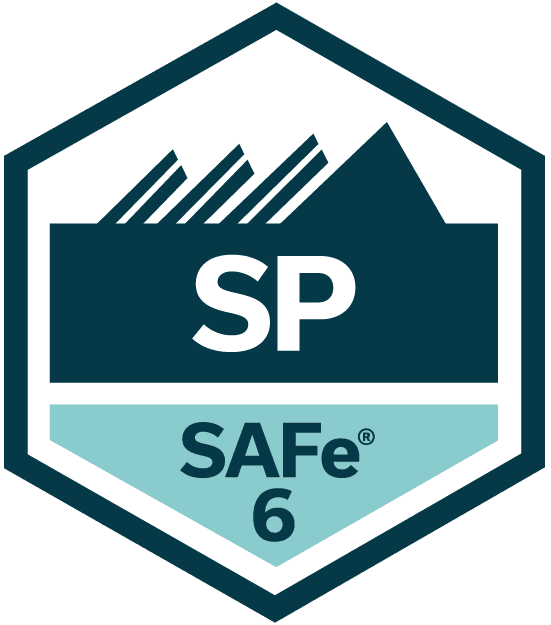SAFe for Teams
Why SAFe™
The SAFe® for Teams course empowers Agile team members to excel within Agile Release Trains (ARTs), aligning their efforts to deliver value efficiently in a Lean-Agile environment. This training equips participants with the tools to master PI Planning, iteration execution, and collaboration across teams, enabling organizations to scale Agile practices seamlessly. Attendees who complete the course are eligible to take the SAFe Practitioner (SP) certification exam, validating their expertise in SAFe.
- Effectively align and coordinate Agile teams across large enterprises.
- Establish clear priorities and maintain alignment with organizational objectives.
- Scale Agile practices seamlessly across programs, portfolios, and teams.
- Foster collaboration between business and technology leaders for enhanced decision-making.
- Enable faster time-to-market with a Lean portfolio approach.
- Create a culture of continuous improvement and innovation with Inspect and Adapt practices.
- Build a customer-centric organization with consistent delivery of high-quality value.

Description
Build the skills needed to become a high-performing team member on an Agile Release Train (ART)—and learn how to collaborate effectively with other teams—by becoming a SAFe® Practitioner (SP). During this two-day course, attendees gain an in-depth understanding of the qualities of high-performing Agile Teams, the ART and how it delivers value, and what they can do to effectively perform their role using Scrum, Kanban, and XP.
Attendees also learn how to write user stories, break down Features, plan and execute Iterations, and experience a PI Planning event. Finally, they learn about the Continuous Delivery Pipeline, the importance of a DevOps culture, how to integrate effectively with other teams on the ART, and what it takes to improve continuously.
Objectives
- Understand the Lean-Agile mindset, SAFe Core Values, and principles to foster alignment and team success.
- Describe the purpose of Agile Release Trains (ARTs) and their role in delivering value through PI Planning and Iteration execution.
- Apply Scrum, Kanban, and XP practices to improve team dynamics and align with other teams in the ART.
- Plan and execute iterations, write user stories, and break down features into actionable work items to deliver incremental value.
- Collaborate effectively in PI Planning activities, including drafting team PI objectives, identifying dependencies, and committing to plans.
- Understand the importance of a DevOps culture and continuous delivery pipelines in achieving faster, more reliable value delivery.
- Identify and address systemic issues through Inspect and Adapt workshops and build a culture of learning and growth within Agile teams.
Outline
- Introduction to the course and objectives
- Overview of SAFe and the importance of Agile teams
- The Lean-Agile Mindset
- SAFe Core Values and Principles
- The SAFe House of Lean
- Role of teams in a SAFe environment
- Overview of key roles: Scrum Master, Product Owner, and Development Team
- Cross-functional teams and collaboration
- Introduction to PI Planning
- Understanding the ART and its purpose
- The importance of alignment and synchronization
- Backlog refinement and readiness
- Setting the context: Vision and Top 10 Features
- Team planning and collaboration strategies
- Drafting Team PI Objectives
- Identifying dependencies and risks
- Team breakout session practice
- Iteration Planning and Backlog refinement
- Daily Stand-ups, Iteration Reviews, and Retrospectives
- Continuous integration and test automation
- System Demo: Showcasing completed work
- Inspect and Adapt Workshop: Identifying and addressing systemic issues
- Root Cause Analysis and Action Items
- Overview of the Continuous Delivery Pipeline
- Understanding DevOps practices and their role in SAFe
- Building a culture of continuous improvement
Who Should Attend
- Managers, Scrum Masters, Product Owners, and executives
- Anyone with knowledge of Scrum seeking to scale its implementation
- Leaders and employees aspiring to become Agile change agents
- Managers driving Agile transformations and empowering teams





